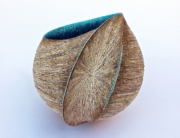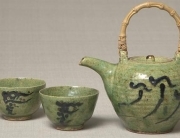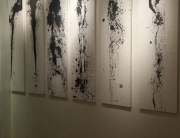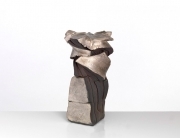URUSHI
Urushi (lacquer) art is unique in Japan, China, Korea and the countries of South Asia, each country retaining to this day its own traditions. Japanese urushi art is particularly rich in terms of variety and sophistication of the technique.
In addition to the highly developed skills that Japanese craftsmen have used to elevate urushi art to the heights to which it is known, Japan is blessed with an abundance of trees producing High quality hard urushi as well as a variety of woods suitable for the production of the body urushi goods.
The history of urushi can be traced back thousands of years, many objects have been excavated prove that urushi culture existed in Japan about 4000 BC. The introduction of Buddhism in the 6th century brought with it urushi crafts mainland Asia, later to be assimilated and transformed into urushi techniques unique to Japan.
Of all the techniques developed in Japan urushi maki-e (sprinkled picture decoration) is the best known. It has been used on a wide range of items ranging from accessories Buddhist altar crockery, furniture and armor. This technique acclaimed grown dramatically from the 12th century.

ISOI Joshin Kinma sokamon Hakkaku jikiro (octagonal box with incised floral decoration and color-filled) A striking example of the application of traditional Kinma ( incised and color-filled)) technique.

Otomaru Kodo Choshitsu hoteiaoimon tebako (cosmetic box with floral decoration polychrome carved urushi) A magnificent example of contemporary use of choshitsu (carved urushi ) technique to produce a plastic composition, performed in a well-balanced range of colors.
By the beginning of modern times, highly decorative forms such as lacquer makie Kodaiji have been made. Thriving trade with the outside world took Japanese Urushi overseas, the beauty of its decoration gold against Europeans fascinating black-so much so that they used the term “japan” to refer thereto.
Urushi art reached its peak of sophistication and refinement in design and technology during the Edo period. The beauty of urushi items this time is best illustrated by furniture and wedding inro (tiered drug containers). Although Kyoto was the largest manufacturing center in what was essentially maki-e goods in Edo (now Tokyo), Kaga (now Prefecture Ishikawa) and also the policies of the various areas of the clan to encourage local industry has given rise to a wide variety of goods urushi each region. Wakasa-nuri , Tsugaru-nuri and Shunkei-nuri are typical of the region urushi types which traditions have been transmitted to the present day.
Japan’s active participation in international exhibitions abroad since the Meiji era saw urushi play an important role in the export trade of items japonais.Lorsque crafts were added to national exhibitions such as Teiten , Bunten and Nitten , urushi work was finally recognized as an art créatif.Aujourd ‘Today, urushi is well established as an art form in which a high level of credit ativité are combined with the maintenance of traditional techniques. At the same time urushi plays a role in intimate life and culture of the Japanese in the form of items such as bowls, trays, food boxes differentiated s ( jubako ) and utensils for the tea ceremony.
Matsuda Gonroku Makinishijukaramoyo nidanshoku (writing table decorations dotted with picture of birds and trees) Miscellaneous maki-e (sprinkled picture decoration ) techniques combined into a unique design give this piece a very distinctive look.
Akaji Yusai Magewazukuri saishitsu Moriki (flat foot, polychrome urushi on a core hoop integrated) Full use of the traditional magewa technique is made to create a fresh modern work.





